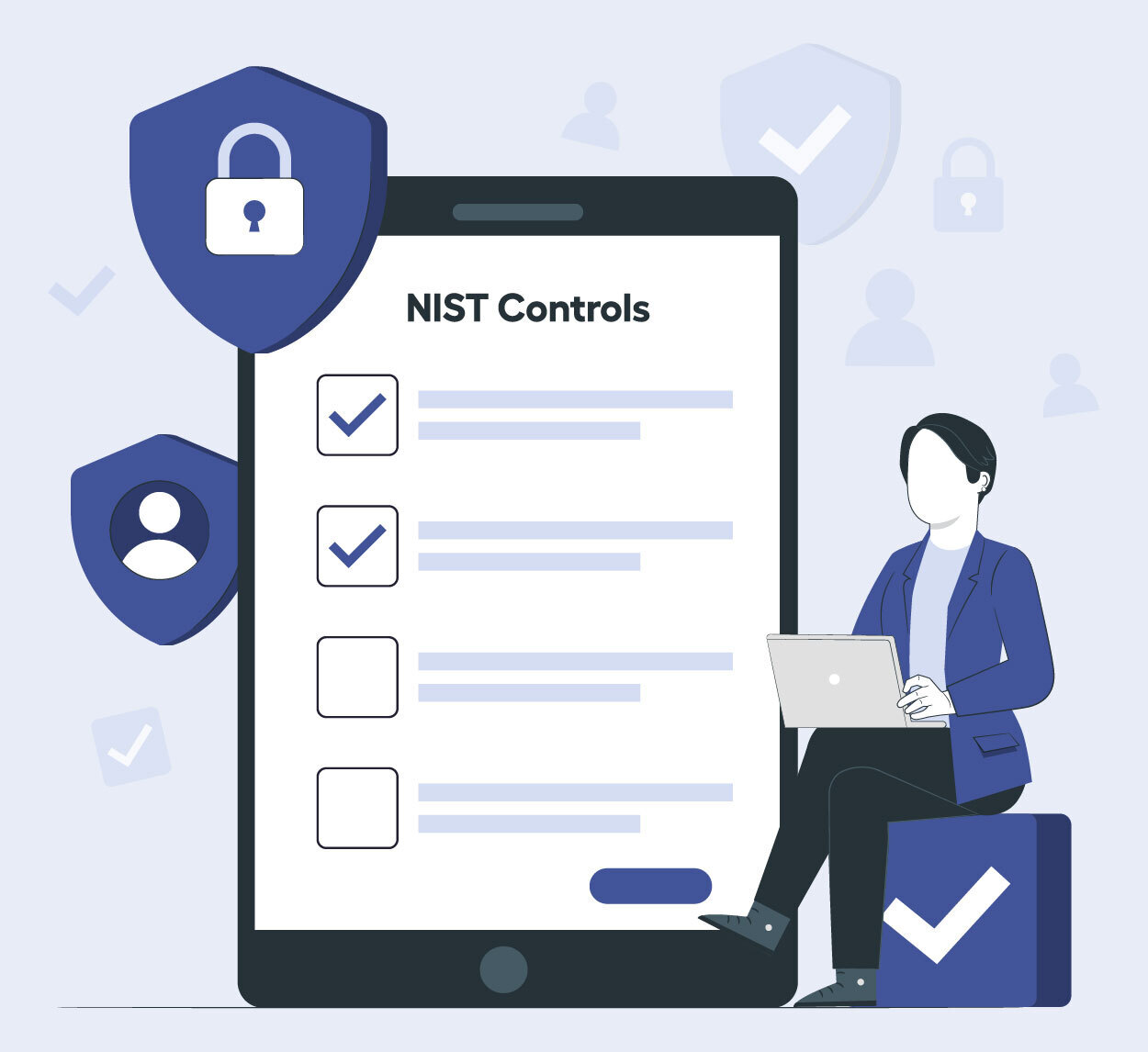What Are NIST Controls?
Organizations often turn to frameworks and standards to fortify their defenses against evolving cyber security threats. One such authoritative source is the National Institute of Standards and Technology (NIST), a U.S. government agency that provides cybersecurity frameworks to bolster internal controls and compliance programs.

NIST controls are pivotal for organizations, offering a structured framework to fortify information systems against a diverse range of cyber threats. They provide comprehensive safeguards, guiding the systematic implementation of security measures, ensuring organizations can address vulnerabilities, mitigate risks, and enhance overall cybersecurity posture.
NIST Controls Overview: NIST’s flagship framework, Special Publication 800-53, encompasses over 900 unique controls across 18 control families. These controls are designed to elevate an organization’s cybersecurity program, enhance its risk posture, and safeguard information and security standards. While mandatory for federal agencies, any organization can leverage NIST controls to strengthen its security program.
Adaptability of NIST Frameworks: NIST frameworks, such as the widely used NIST Cybersecurity Framework (NIST CSF), exhibit remarkable adaptability. More than a collection of rules, the NIST CSF serves as a dynamic blueprint to fortify organizations’ digital defenses. It accommodates entities of any size and industry, offering a structured approach to risk management, incident response, and contingency planning.
Functions of NIST Framework: The NIST CSF revolves around five core functions: Identify, Protect, Detect, Respond, and Recover. Each function, with its corresponding categories, works synergistically to manage and reduce cybersecurity risk. The framework emphasizes continuous improvement, aligning cybersecurity strategies with broader business goals.
NIST Security Controls in Detail: NIST security controls are comprehensive safeguards and countermeasures implemented to secure information systems. The current version of NIST 800-53 boasts over 900 controls, organized into 18 families. These controls cover diverse security requirements, from access control and authentication to risk assessment and incident response.
NIST SP 800-53B: For high-impact security controls tailored to national security systems, NIST introduced SP 800-53B, complementing the main standard. This supplementary guidance addresses the rigorous demands of safeguarding classified information within national security systems.
NIST SP 800-53 Revision 5: The fifth revision of NIST 800-53, titled “Security and Privacy Controls for Information Systems and Organizations,” marks a significant evolution. This version adopts an outcomes-based approach, focusing on achieving specific results. By removing the limiting term “information system,” it broadens the applicability of controls to encompass a wide range of systems, including emerging technologies like IoT devices.
Maintaining Compliance with VComply
Navigating NIST compliance can be complex, but platforms like VComply simplify the journey. VComply automates compliance workflows, centralizes NIST control management processes, and ensures seamless adherence to cybersecurity standards. The platform empowers organizations to focus on protecting valuable data and information systems.
Conclusion
As cyber threats continue to evolve, NIST controls offer a robust framework for organizations to mitigate risks and enhance resilience. Leverage VComply to implement security frameworks and streamline compliance efforts, making the pursuit of cybersecurity excellence more achievable. A proactive approach rooted in NIST controls and supported by innovative solutions is essential for safeguarding digital assets.
Explore what makes VComply a consistent G2 high perfomer in Compliance Management. Request your demo today and transform your approach.
